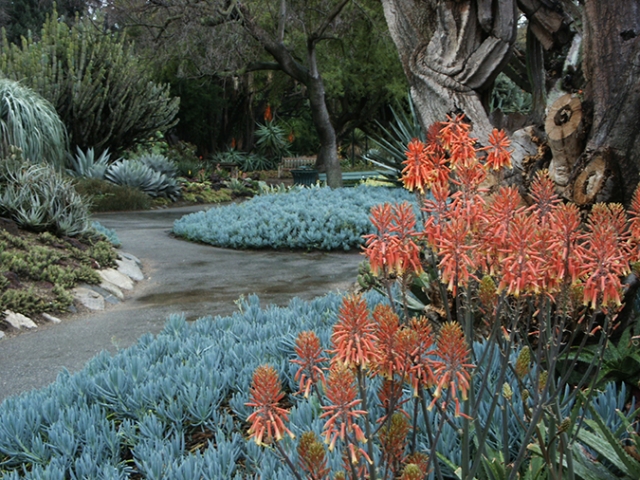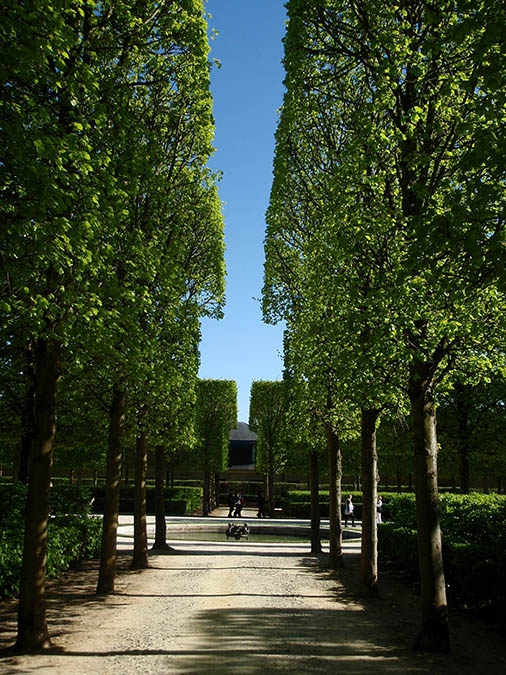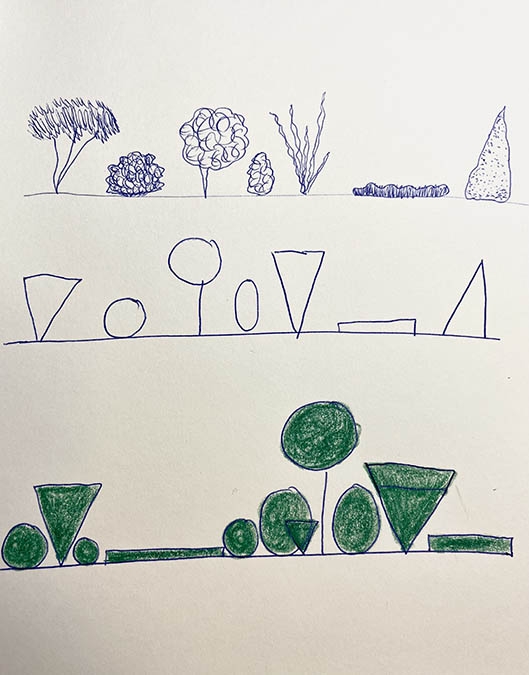Planning Your Garden with Design Principles
When designing your own garden, the practical considerations are the most important decisions. The creative aspects of your design are more nuanced and may be where you need the most help. Here are some design principles to keep in mind. You certainly do not need to use all these concepts, but they’ll give you some food for thought.
Primary Design Principles
Style, atmosphere, surroundings: What style/feeling are you aiming for? A low-stimulus and relaxing retreat, an inspiring entertaining area or a diverse habitat for pollinators? Are you in the city or the mountains? What style harmonizes with your surroundings?
Lines: Do you want straight lines or curves for your garden beds? A combination? If you are going to do curves, make sure they are strong, purposeful curves, not arbitrary wiggly edges. Sight lines are important in a garden—you don’t want your eye drawn straight to a utility box!

The strong curve of this garden path creates a dramatic effect. Huntington Library Desert Garden. Photo: Pamla J. Eisenberg from Anaheim, USA, CC BY-SA 2.0
Mass, void, structure: Mass is structure, such as a boulder or shrub, while void is emptiness. It’s critical to have a balance of both for a garden to feel right. Too many things in a garden can feel crowded, so make room for empty space.

In this Versailles garden, the sky/void in the canopy is the most intriguing element. Photo: Julia Pearson.
Planes: Vertical, horizontal. What is overhead: The scorching sun? Shade sails or a tree canopy? What is underfoot? Is there enough height in the garden? Consider levels in your garden, adding stairs, a ramp or berms.
Shapes, silhouettes: This can apply to plants, particularly trees and shrubs, as well as built structures, such as arbors, pillars, etc.

Play around with simple shapes to see what fits together. Sketch by Julia Pearson.
Secondary Design Principles
Repetition, patterns, rhythm: This could be patterns in foliage, such as a ferny texture repeated throughout, or painted tiles, cushions or even the rhythm of a winding path.
Textures: Texture is often overlooked by the novice gardener. The leaves, bark and seed pods remain in the garden much longer than the flowers. Consider the texture of buildings and surface materials as well.
Color: Often people associate “warm colors” with energy and “cool” colors with calm, but it really depends how you use them. A bold pattern of green and blue can be overstimulating, while an orange wall that blends into its surroundings can feel warm and relaxing. You can create interest in a garden using many design principals, not just a riot of colorful flowers. Being deliberate in your color choices will give your garden a more polished look. If in doubt, start with greens. You can always add more as your garden evolves.
Water: Water can make a huge effect in a garden. While it may seem questionable to use water in a dry climate, there are so many ways you can incorporate it without being wasteful. A large dish of water under the shade of a tree can provide a drink for birds and be a beautiful, reflective feature.
Art, planters, furniture, lighting: Don’t forget, interior design concepts can be applied outside too!
Add new comment